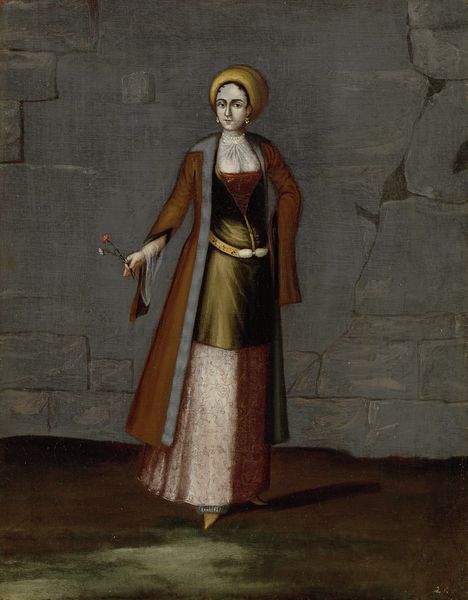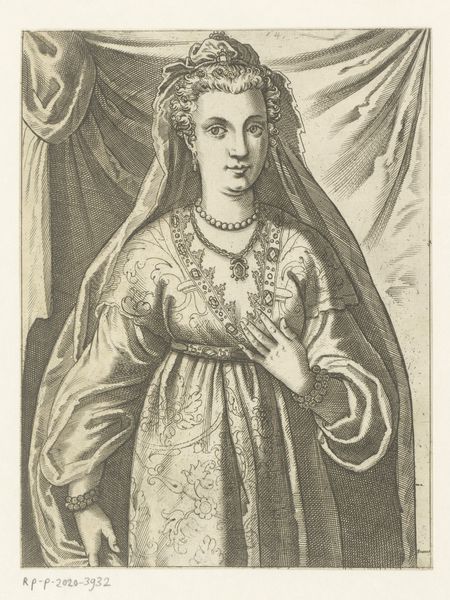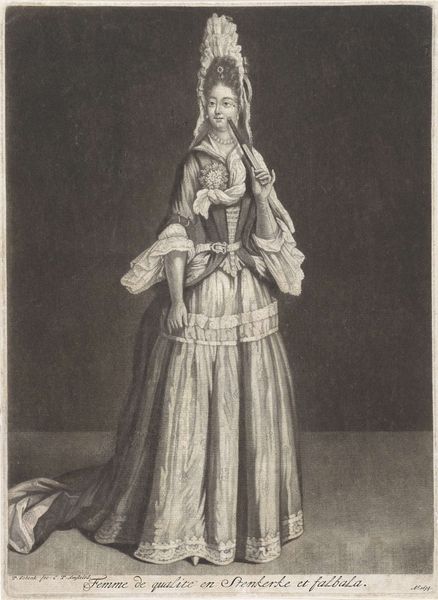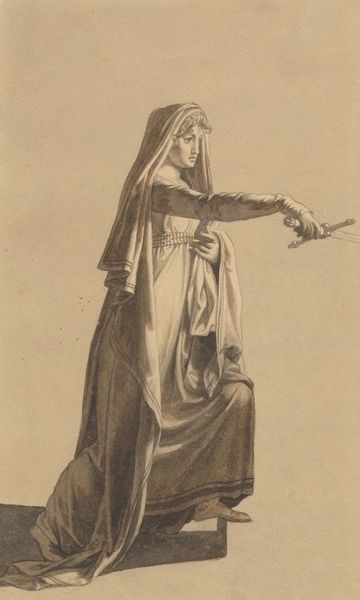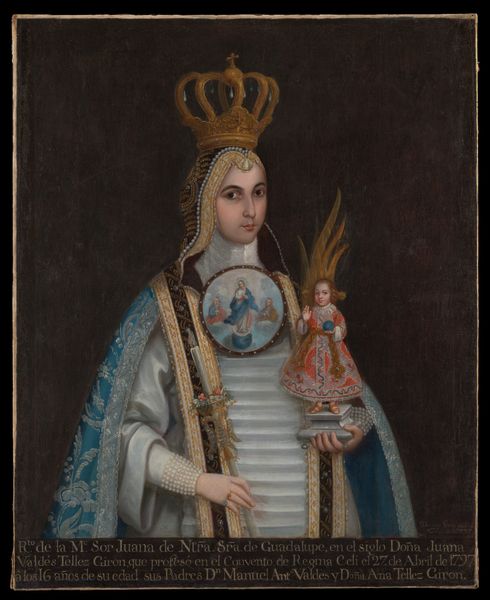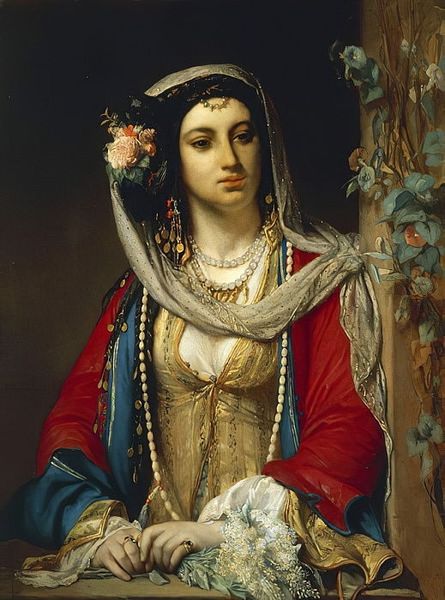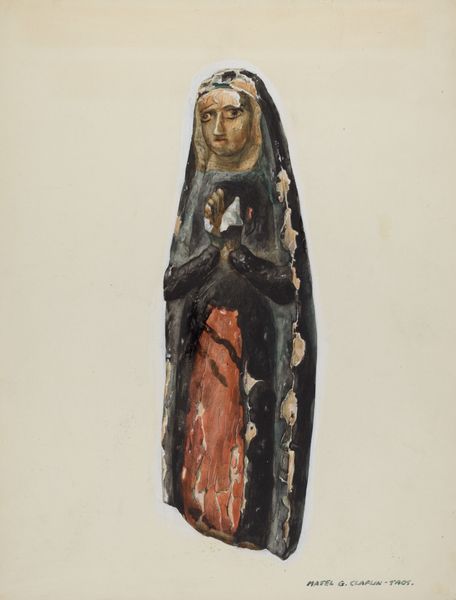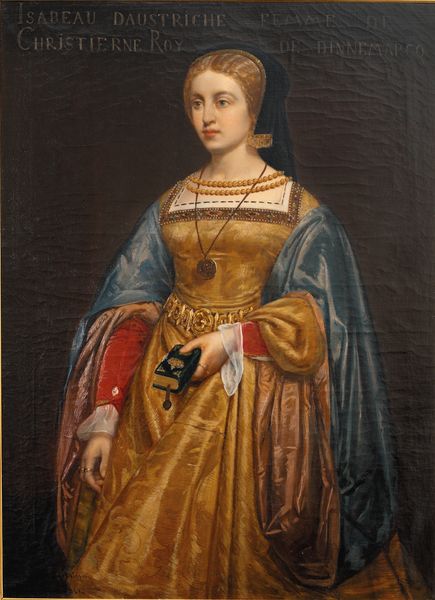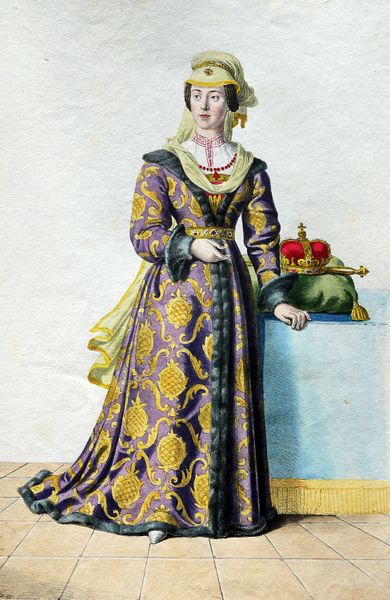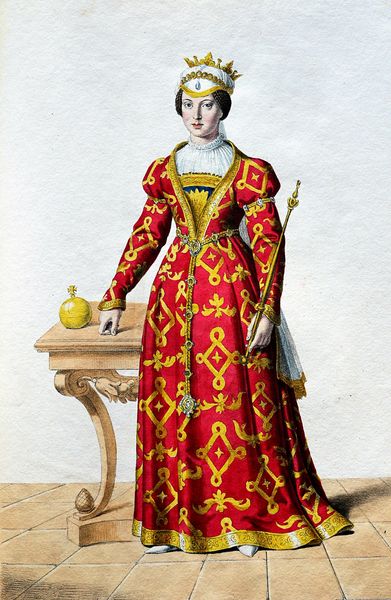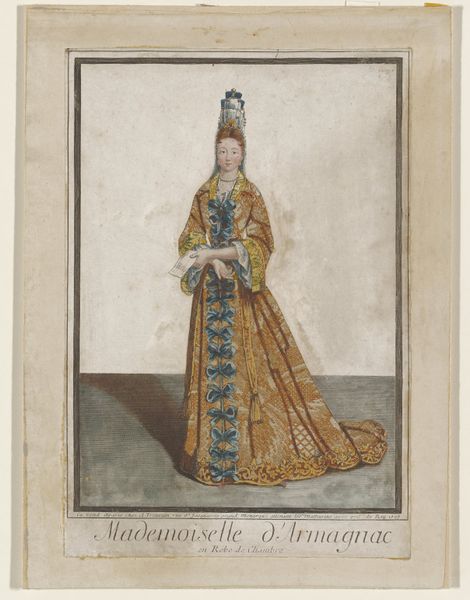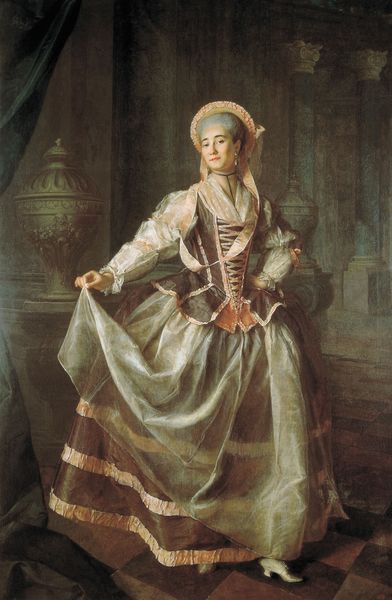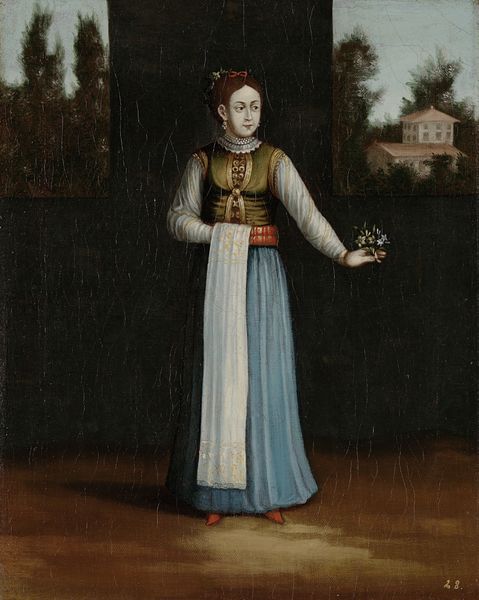
painting, oil-paint
#
portrait
#
baroque
#
painting
#
oil-paint
#
oil painting
#
orientalism
#
genre-painting
#
history-painting
Dimensions: height 39 cm, width 30.5 cm
Copyright: Rijks Museum: Open Domain
Curator: "Woman from the Island of Mykonos" by Jean Baptiste Vanmour, dating roughly between 1700 and 1737. It's an oil painting that gives us a peek into a particular cultural moment. What jumps out at you? Editor: Immediately, a quiet formality. She stands, draped and still, in what looks like ancient ruins. And that tiny rose she holds so gently adds such a fleeting contrast. Curator: It's fascinating how Vanmour positions her against that backdrop, isn't it? It’s classical, hinting at a history both grand and crumbling. These so called “genre paintings”, became fashionable during that period, offering glimpses into different cultures and social roles within the Ottoman Empire, a bit exoticising really, but also incredibly detailed. Editor: There’s a definite layering of textures here—the rough stone, the patterned fabric, the light, flowing drape of her shawl. They almost whisper stories of trade routes and cultural exchanges. That dress alone—it's a statement piece, almost theatrical. Is it accurate, I wonder, or Vanmour's interpretation? Curator: Probably a bit of both! Vanmour was a master at blending observed details with artistic license. As the official painter for the French Ambassador in Istanbul, he documented court life and the surrounding cultures. His work played a vital role in shaping European perceptions of the East. There's that element of fantasy, you know, projecting desires onto the unknown. But, also genuine curiosity. Editor: That delicate balance of fact and fiction is potent. I keep coming back to the flower, such a small element, yet so loaded. Beauty? Loss? Something about it feels deeply personal, despite the formality of the portrait. It adds to the enduring enigma. The work as a whole seems like a fleeting moment. Curator: Absolutely. He manages to distill the complexity of a cross-cultural encounter into a single image. These were the visual dispatches from a world largely unknown. Fascinating. It makes me wonder, whose gaze are we really seeing through, Vanmour's, or ours looking back through history? Editor: Indeed, and that is part of the paintings enduring power, leaving me considering the layers of interpretation.
Comments
No comments
Be the first to comment and join the conversation on the ultimate creative platform.
